Are you looking to capture the essence of Washington DC through your lens? Washington DC offers a treasure trove of photographic opportunities, from its iconic landmarks and historic monuments to its vibrant street life and picturesque neighborhoods.
Whether you’re an amateur shutterbug or a seasoned pro, this city has something for every photographer. In this blog post, we’ll share 15 essential photography tips to help you make the most out of your visit to the nation’s capital.
From mastering the golden hour and utilizing leading lines to capturing the dynamic seasons and exploring unique perspectives, these tips will guide you in creating stunning images that reflect the true spirit of Washington DC.
Grab your camera and get ready to explore one of the most photogenic cities in the world!
Is Washington DC A Good Place for Photography?
Absolutely, Washington DC is a fantastic place for photography. The city is rich with iconic landmarks such as the Lincoln Memorial, the Washington Monument, and the US Capitol, offering countless opportunities for capturing stunning architectural shots.
The vibrant street life, bustling markets, and dynamic events provide excellent subjects for candid street photography. Seasonal changes, like the cherry blossoms in spring and the vibrant fall foliage, add natural beauty and variety to your portfolio.
The city’s diverse neighborhoods, from the historic charm of Georgetown to the eclectic vibe of Adams Morgan, offer unique backdrops for portraits and urban scenes.
Additionally, Washington DC’s reflective surfaces, like the Reflecting Pool, and the atmospheric blue hour lighting create perfect conditions for creative compositions.
With its mix of historical significance, architectural beauty, and lively culture, Washington DC is a dream destination for photographers of all levels.
15 Washington DC Photography Tips
Washington, DC, the capital of the United States, is a city rich in history, culture, and stunning architecture. For photographers, it offers an endless array of opportunities to capture iconic landmarks, vibrant street scenes, and picturesque natural settings.
Whether you’re a seasoned professional or a passionate amateur, these 15 tips will help you make the most out of your photography experience in Washington, DC.
1. Plan Your Shots Around the Golden Hour
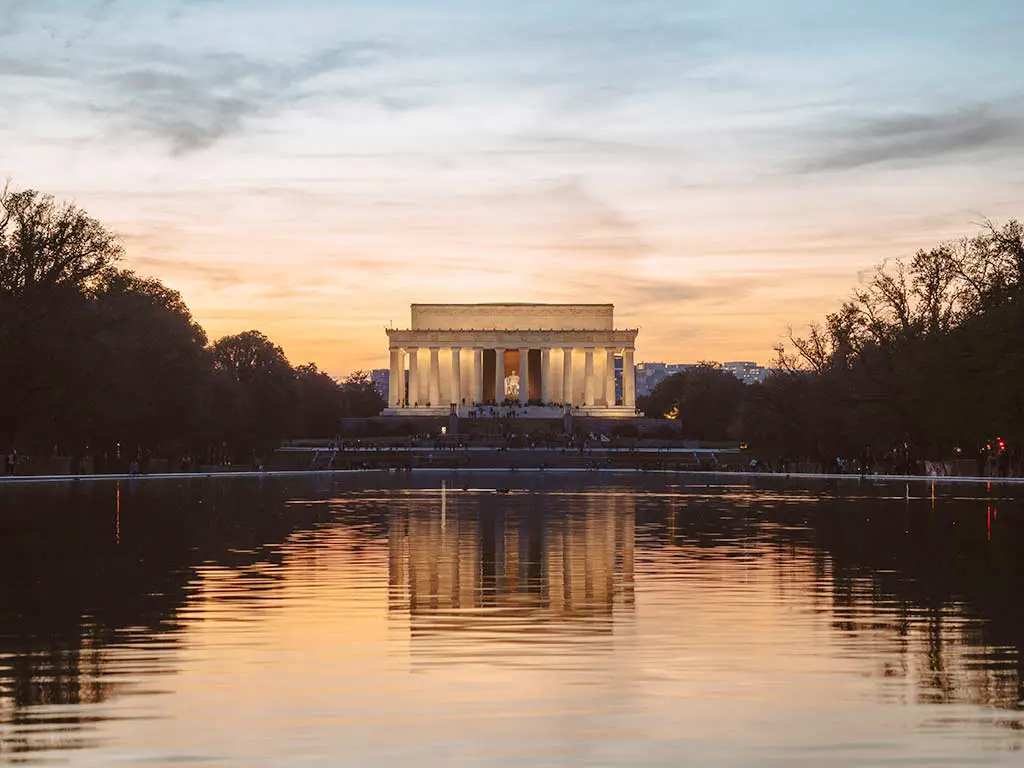
The golden hour, the period shortly after sunrise and just before sunset, provides the most favorable natural light for photography.
During these times, the sunlight is softer and warmer, enhancing colors and reducing harsh shadows, making your images more visually appealing.
- Sunrise: Early mornings offer a serene atmosphere and fewer crowds, which is ideal for photographing popular sites like the Lincoln Memorial and the Tidal Basin. The calmness of the morning also means you can capture beautiful reflections on water bodies.
- Sunset: The evening golden hour bathes the city in a warm glow, perfect for capturing the grandeur of buildings like the US Capitol. Additionally, the sky often transforms into a canvas of colors, providing a dramatic backdrop for your photos.
2. Scout Locations in Advance
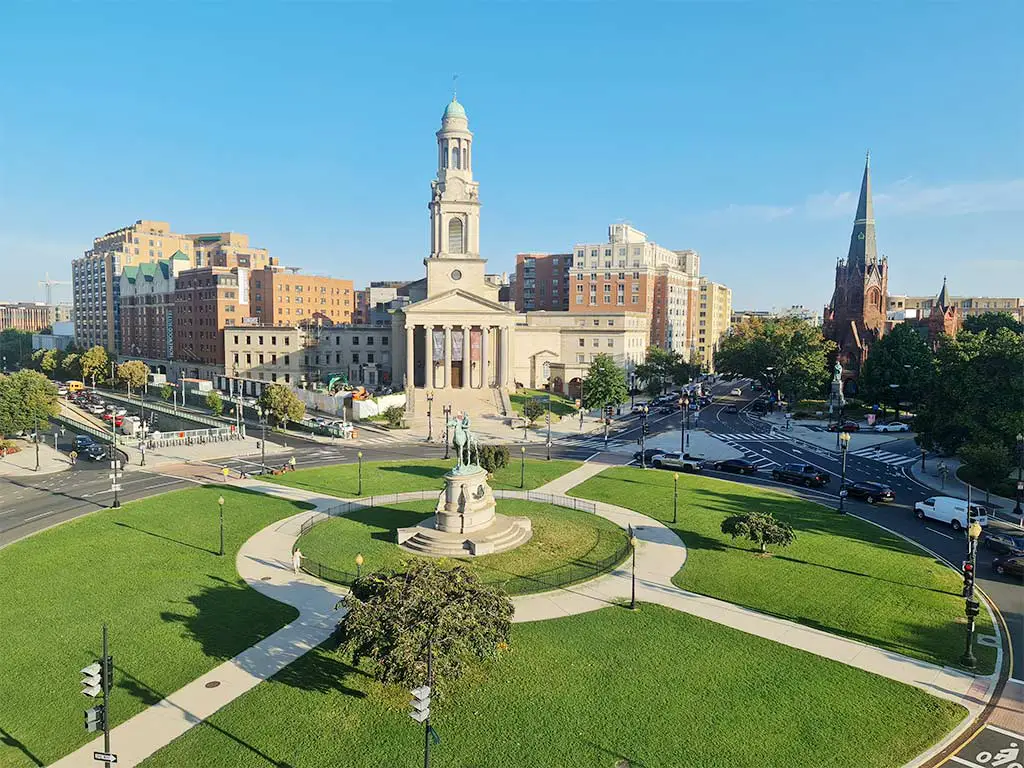
Before heading out with your camera, invest time in researching and scouting the locations you wish to photograph. Understanding the best angles, lighting conditions, and potential obstacles ahead of time can significantly enhance the quality of your shots.
- Visit Multiple Times: To get a comprehensive understanding of your chosen locations, visit them at different times of the day. This will help you observe how the light changes and which times provide the best photographic opportunities.
- Use Technology: Leverage tools like Google Earth to explore viewpoints virtually and photography forums for insider tips on the best spots. Apps like PhotoPills can help you track the sun’s position, ensuring you’re in the right place at the right time.
3. Capture Iconic Landmarks with a Unique Perspective
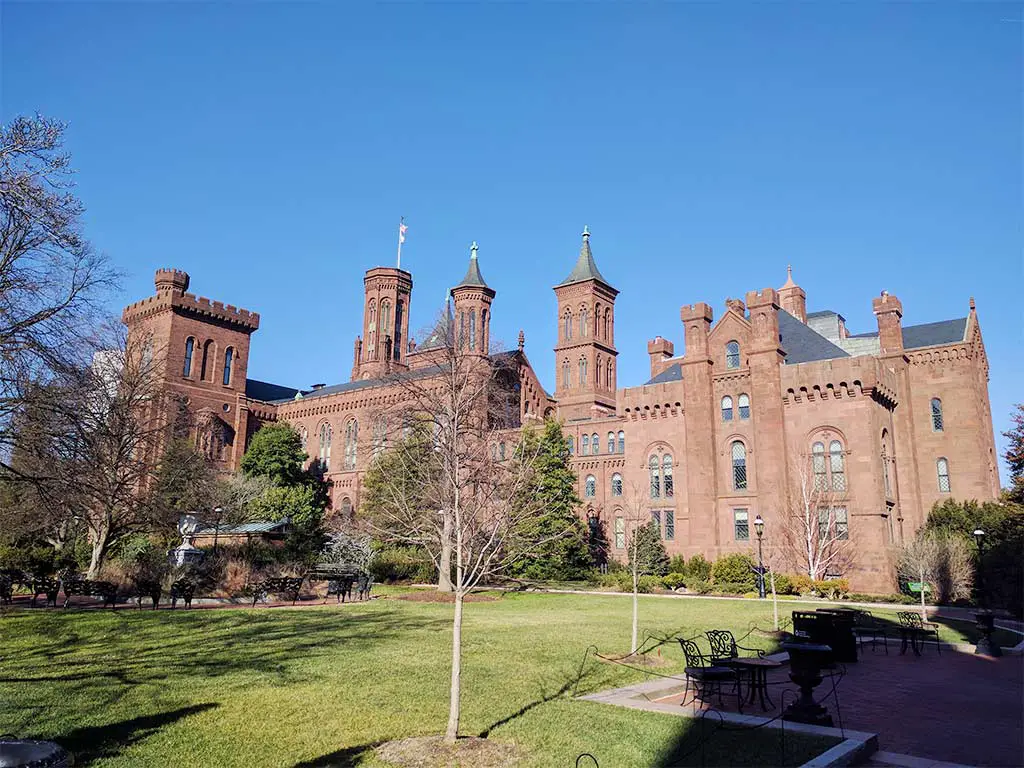
Washington, DC is home to some of the most photographed landmarks in the world, such as the Washington Monument, the US Capitol, and the Lincoln Memorial.
To make your photos stand out, seek out unique angles or incorporate interesting foreground elements.
- Reflective Surfaces: Utilize reflections in puddles, fountains, or glass surfaces to create intriguing compositions. The Reflecting Pool, in particular, offers stunning mirrored views of the Washington Monument.
- Foreground Elements: Adding elements like flowers, trees, or architectural details in the foreground can provide a sense of scale and depth to your images, making them more dynamic.
4. Utilize Leading Lines

Leading lines are a powerful compositional tool that guide the viewer’s eye through the photograph, adding depth and dimension. Washington, DC offers numerous opportunities to incorporate leading lines effectively.
- Pathways and Roads: Use the city’s streets, pathways, and bridges as leading lines. For instance, the pathways leading up to the Lincoln Memorial can draw the viewer’s eye towards the iconic structure.
- Architectural Elements: Columns, steps, and arches found in DC’s many historic buildings can serve as strong leading lines, enhancing the visual impact of your photos.
5. Embrace the Blue Hour

The blue hour, occurring just before sunrise and after sunset, casts a cool, blue light over the city. This time is perfect for capturing the illuminated monuments against the rich blue sky, resulting in striking and atmospheric photos.
- Use a Tripod: Low light conditions during the blue hour necessitate a stable shooting platform. A tripod will help you achieve sharp images without camera shake.
- Long Exposures: Experiment with long exposure shots to capture the city’s lights and create a dreamy, ethereal effect. Long exposures can also smooth out any water surfaces, enhancing reflections.
6. Experiment with Night Photography

Washington, DC transforms into a different world at night, with its monuments and buildings beautifully illuminated. Night photography can reveal a magical side of the city, showcasing its landmarks in a new light.
- Stability: A tripod is essential for night photography to ensure sharp, clear images. Without it, the long exposure times needed in low light can result in blurry photos.
- Camera Settings: Start with a low ISO to reduce noise, a wide aperture to let in as much light as possible, and a slower shutter speed to properly expose the scene. Don’t be afraid to experiment with these settings to find the perfect balance.
7. Capture Seasonal Changes

Washington, DC’s scenery changes dramatically with the seasons, offering unique photographic opportunities year-round. From the blooming cherry blossoms in spring to the vibrant fall foliage, each season provides a different backdrop.
- Cherry Blossoms: The Tidal Basin becomes a photographer’s paradise in late March or early April when the cherry blossoms are in full bloom. Arrive early to avoid the crowds and capture the delicate blossoms against the monuments.
- Fall Colors: Explore Rock Creek Park, the National Arboretum, and other green spaces in October for stunning displays of autumn colors. The vibrant reds, oranges, and yellows provide a warm and inviting atmosphere for your photos.
8. Make Use of Reflections

Reflections can add an artistic and symmetrical touch to your photographs. Washington, DC has several reflective surfaces, such as the Reflecting Pool and various fountains, that can be used to create mirror images of the monuments.
- Symmetry: Align your shot to emphasize the symmetry in the reflections. This can create a visually pleasing and balanced composition.
- Calm Waters: Early mornings often provide the calmest waters, ideal for capturing clear and undisturbed reflections. Plan your shoot accordingly to take advantage of these conditions.
9. Capture the City’s Vibrant Street Life
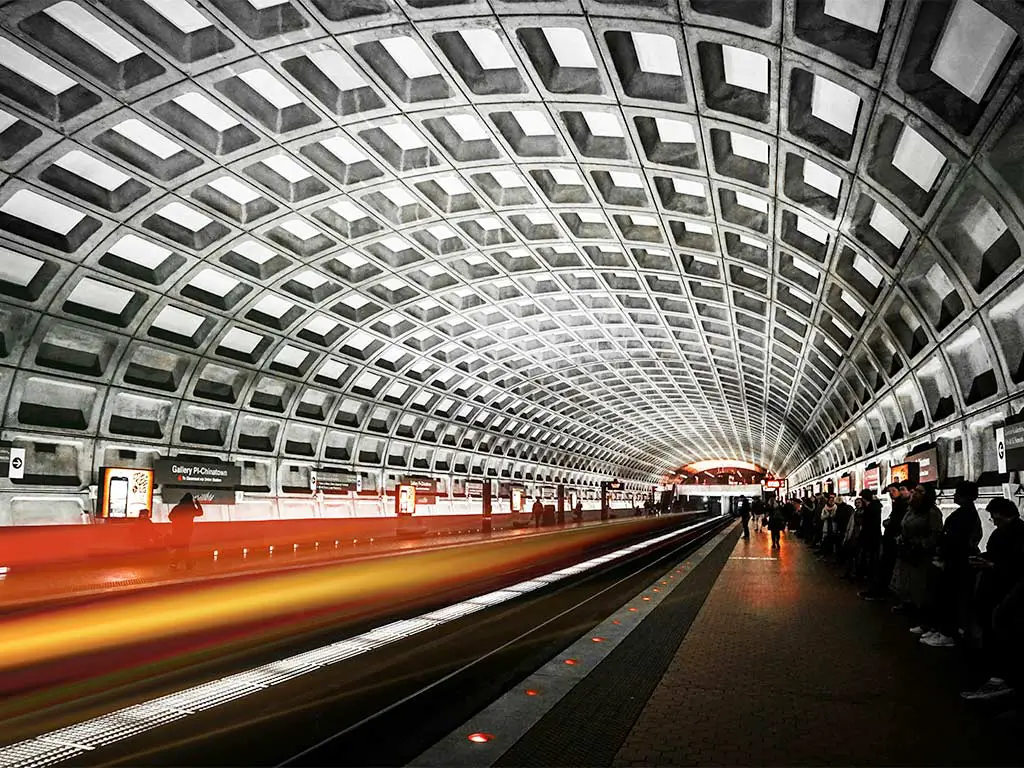
Beyond its famous landmarks, Washington, DC boasts a vibrant street life that is worth capturing. From bustling markets to street performers, there’s always something happening in the city.
- Candid Shots: Aim for candid shots to capture genuine moments and the true essence of the city. Keep your camera ready and be patient, waiting for the perfect moment to press the shutter.
- Local Events: Check out local events, festivals, and parades for dynamic photo opportunities. These events often feature colorful costumes, lively performances, and large crowds, providing plenty of subjects to photograph.
10. Explore Washington DC’s Neighborhoods
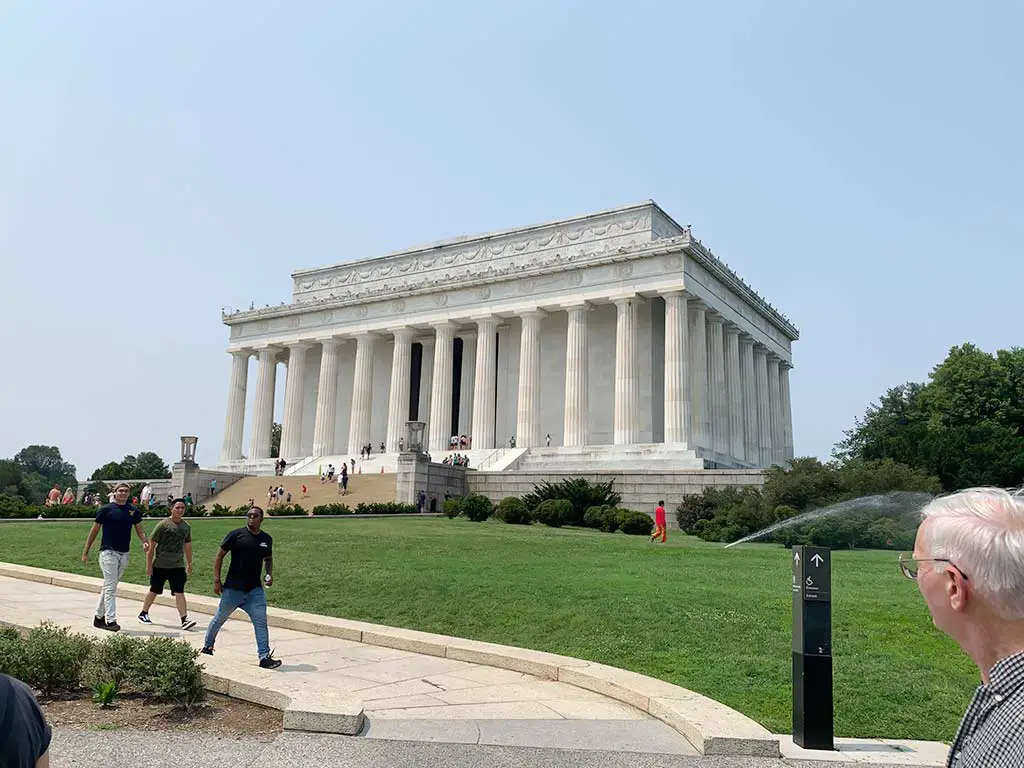
Each neighborhood in Washington, DC has its own unique charm and character. Georgetown, with its historic architecture and cobblestone streets, and Adams Morgan, known for its colorful murals and eclectic vibe, are just two examples.
- Walk Around: Take your time to walk around and explore the hidden corners of each neighborhood. This allows you to discover unique perspectives and lesser-known spots.
- Details: Pay attention to the details – doors, windows, street art, and even the textures of the buildings can make for interesting subjects. Capture the essence of the neighborhood through these small yet significant elements.
11. Use a Wide-Angle Lens for Monument Shots

A wide-angle lens can help you capture the grandeur of Washington, DC’s monuments and expansive landscapes. It allows you to fit more of the scene into your frame, creating a sense of scale and magnificence.
- Close-Up Perspective: Get close to your subject while using a wide-angle lens to emphasize the scale and grandeur of the monument. This technique can make the structure appear even more imposing.
- Avoid Distortion: Be mindful of distortion, a common issue with wide-angle lenses. Try to keep the lens level and avoid tilting it upwards or downwards excessively.
12. Master the Rule of Thirds

The rule of thirds is a fundamental principle of composition that can help you create balanced and visually engaging photos. By dividing your frame into nine equal parts, you can position your main subject along these lines or at their intersections.
- Grid Overlay: Most cameras and smartphones have a grid overlay feature that can help you apply the rule of thirds. Use this feature to compose your shots more effectively.
- Subject Placement: Place key elements, such as the horizon or your main subject, along the grid lines or at their intersections to create a more dynamic and balanced composition.
13. Experiment with Black and White Photography

Black and white photography can add a timeless and classic feel to your images. It’s especially effective for highlighting shapes, textures, and contrasts, making it ideal for architectural shots and portraits.
- High Contrast Scenes: Look for scenes with strong contrasts between light and shadow. These can create dramatic and striking black and white photos.
- Post-Processing: Convert your color images to black and white in post-processing to have more control over the tones and contrasts. Software like Adobe Lightroom or Photoshop offers powerful tools for this purpose.
14. Capture the Dynamic Weather

Washington, DC experiences a variety of weather conditions throughout the year, each offering unique photographic opportunities.
Whether it’s a sunny day, a foggy morning, or a snow-covered landscape, different weather can dramatically change the mood of your photos.
- Foggy Mornings: Fog can add a mysterious and ethereal quality to your photos. Head to locations like the National Mall early in the morning when fog is more likely to occur.
- Rain and Snow: Don’t shy away from shooting in the rain or snow. These conditions can create unique and beautiful scenes, especially when photographing monuments and natural landscapes. Just ensure your camera gear is protected from the elements.
15. Interact with Locals

Engaging with the locals can provide you with valuable insights and new perspectives. They can guide you to hidden gems, share interesting stories, and even become subjects for your portraits.
- Strike Up Conversations: Don’t be afraid to talk to people you meet. Explain your interest in photography and ask if they have any recommendations or stories to share.
- Portraits: If you’re interested in portrait photography, kindly ask locals if they would be willing to be photographed. Always respect their wishes and offer to share the photos with them.
Washington, DC is a city of endless photographic opportunities, from its iconic landmarks to its vibrant street life and picturesque neighborhoods.
By following these 15 tips, you can enhance your photography skills and capture the essence of this beautiful city in a unique and compelling way.
Remember to plan your shots, explore different perspectives, and most importantly, enjoy the process of discovering and documenting the many facets of Washington, DC through your lens.
Wrapping Up
Washington DC offers a rich tapestry of photographic opportunities, from its iconic monuments and historic landmarks to its vibrant neighborhoods and dynamic street scenes.
By applying these 15 photography tips, you’ll be well-equipped to capture the city’s unique charm and grandeur.
Whether you’re focusing on the perfect lighting during the golden hour, experimenting with creative compositions, or exploring the seasonal beauty of the city, each tip will help you enhance your skills and produce stunning images.
Remember to plan your shoots, embrace different perspectives, and engage with the local culture to add depth and authenticity to your photos. With a keen eye and a bit of preparation, you can create a captivating visual story that showcases the essence of Washington DC.
Happy shooting!




Scott Jung